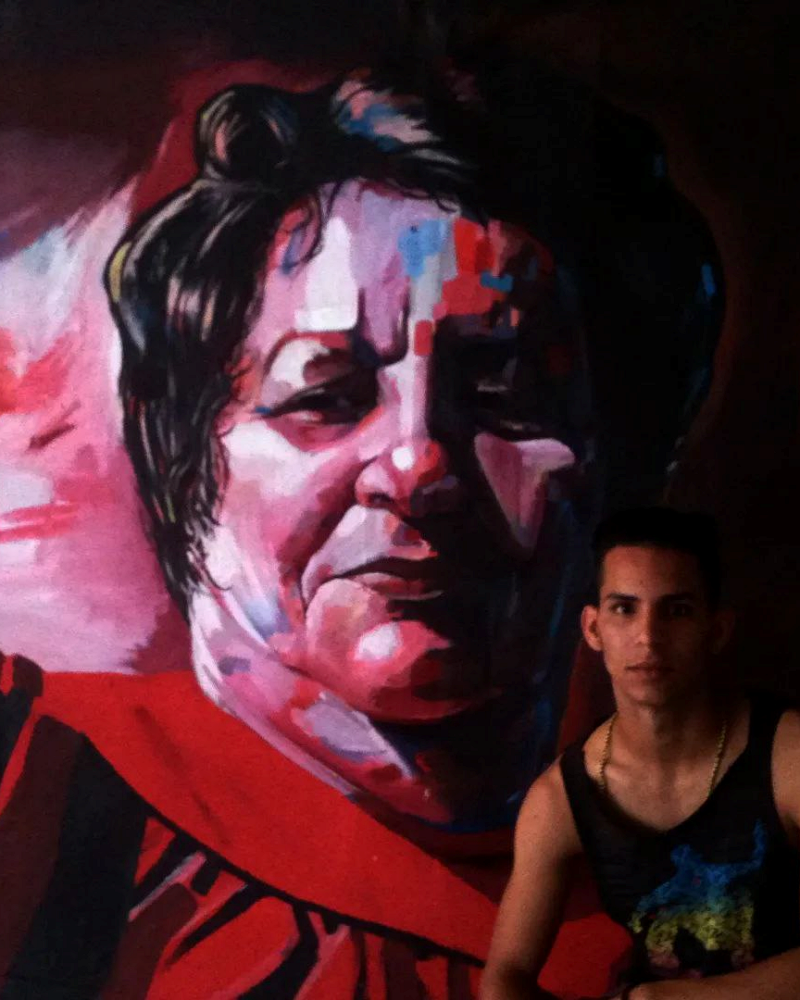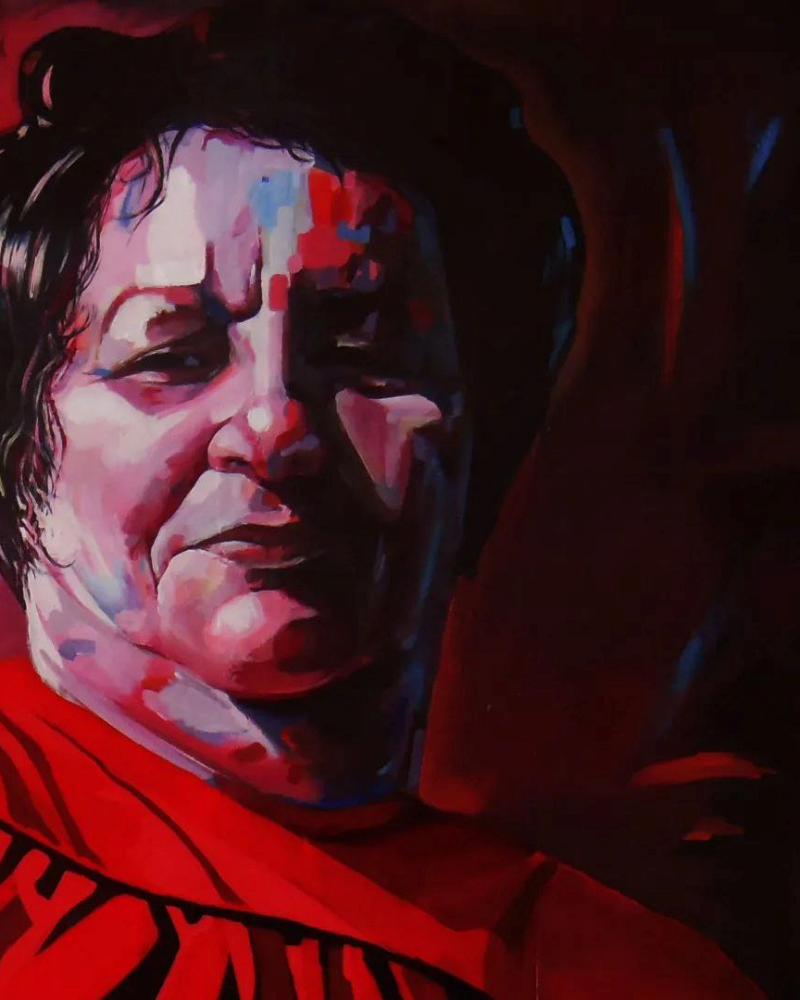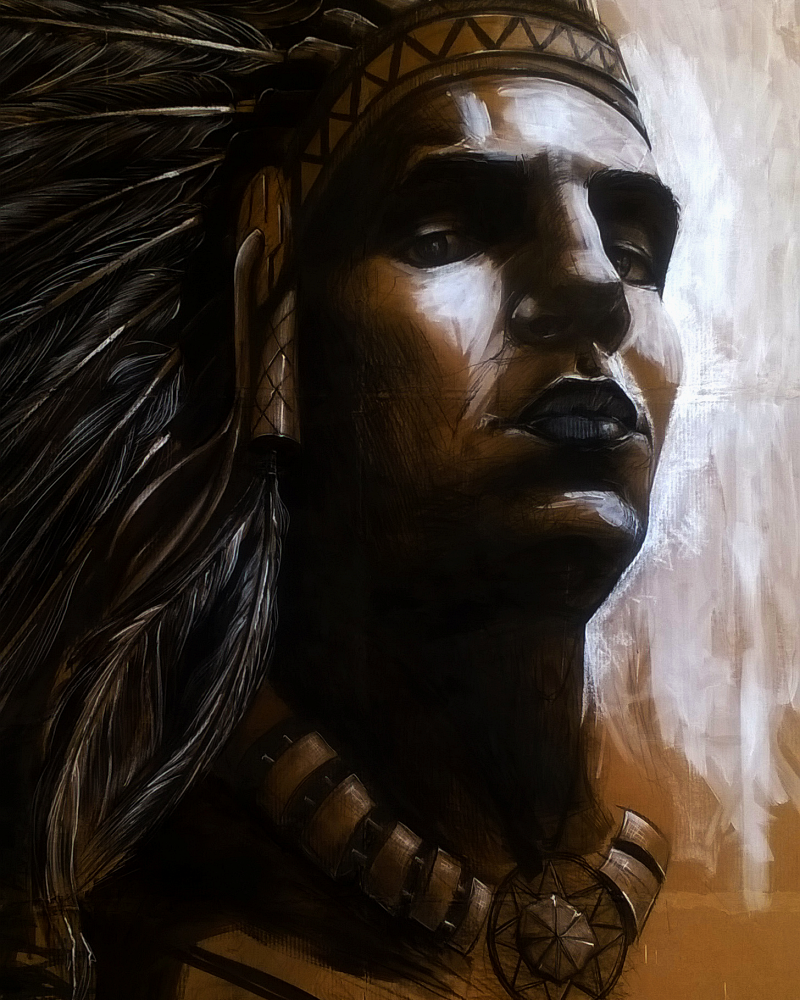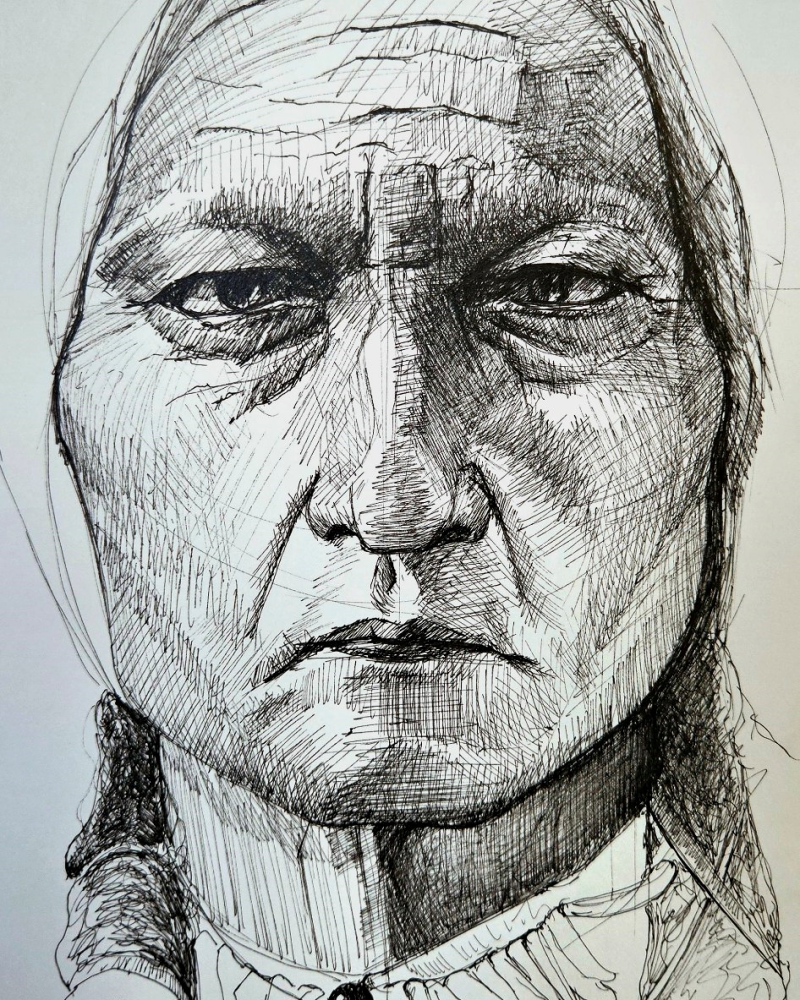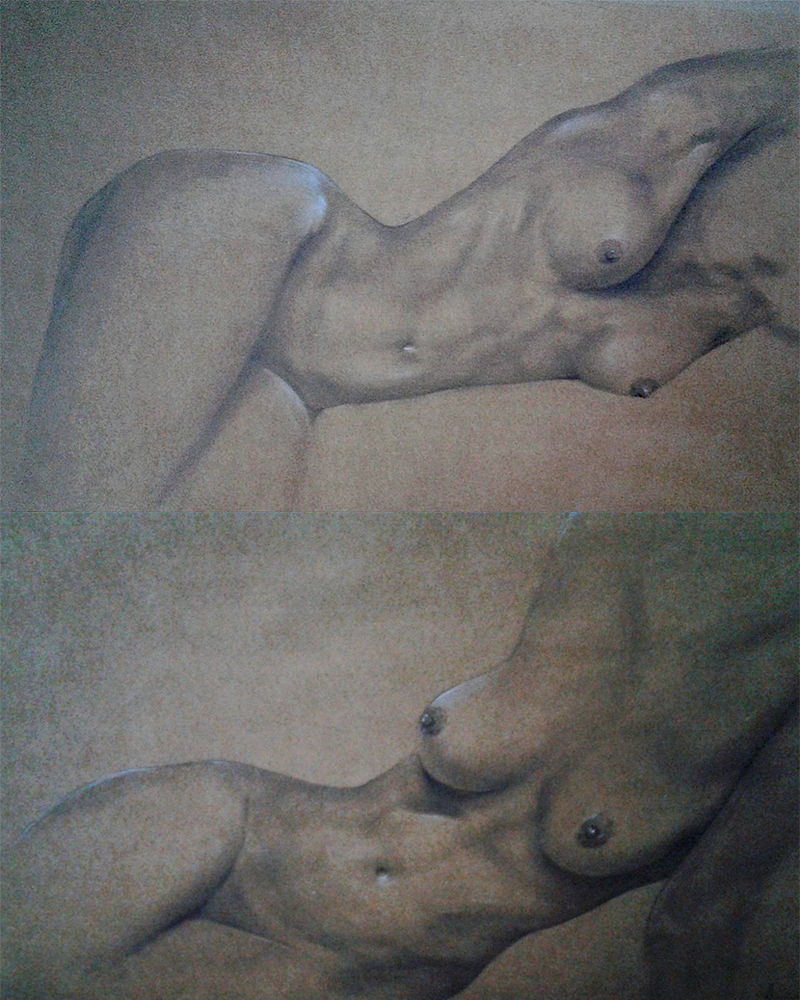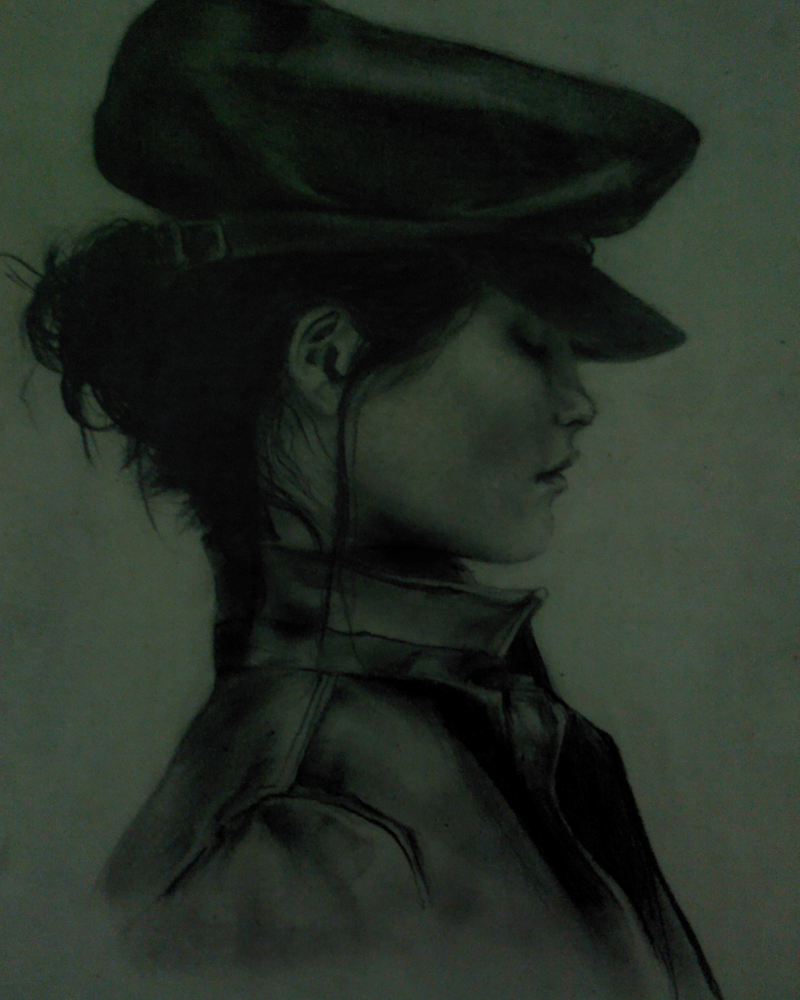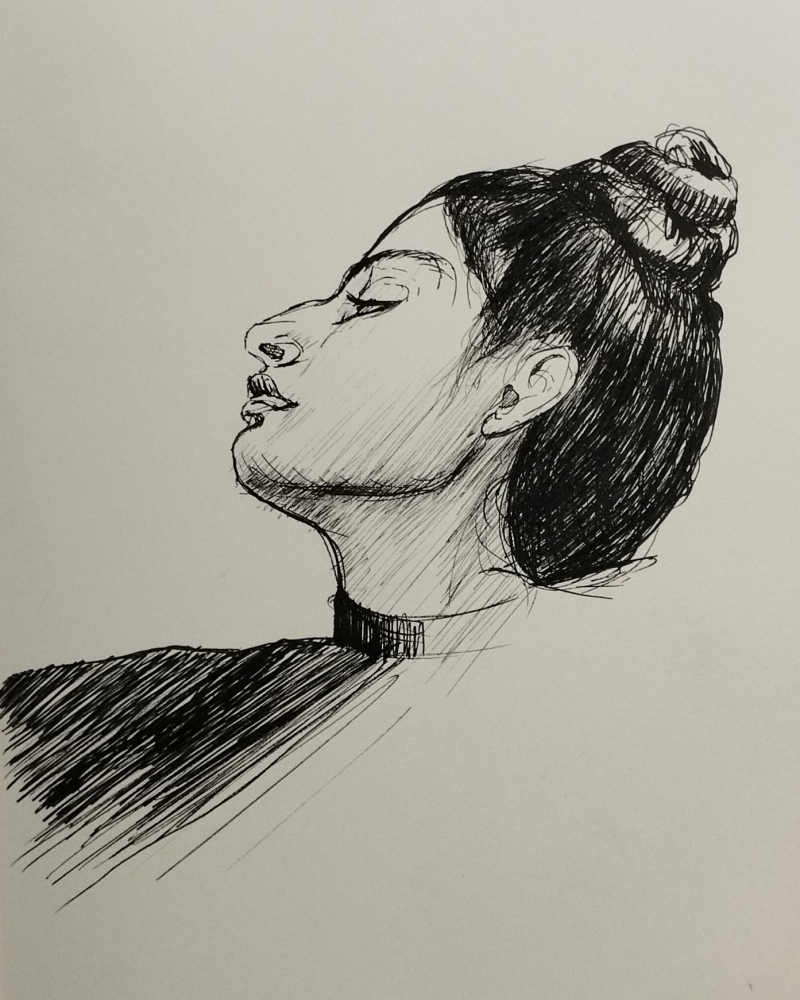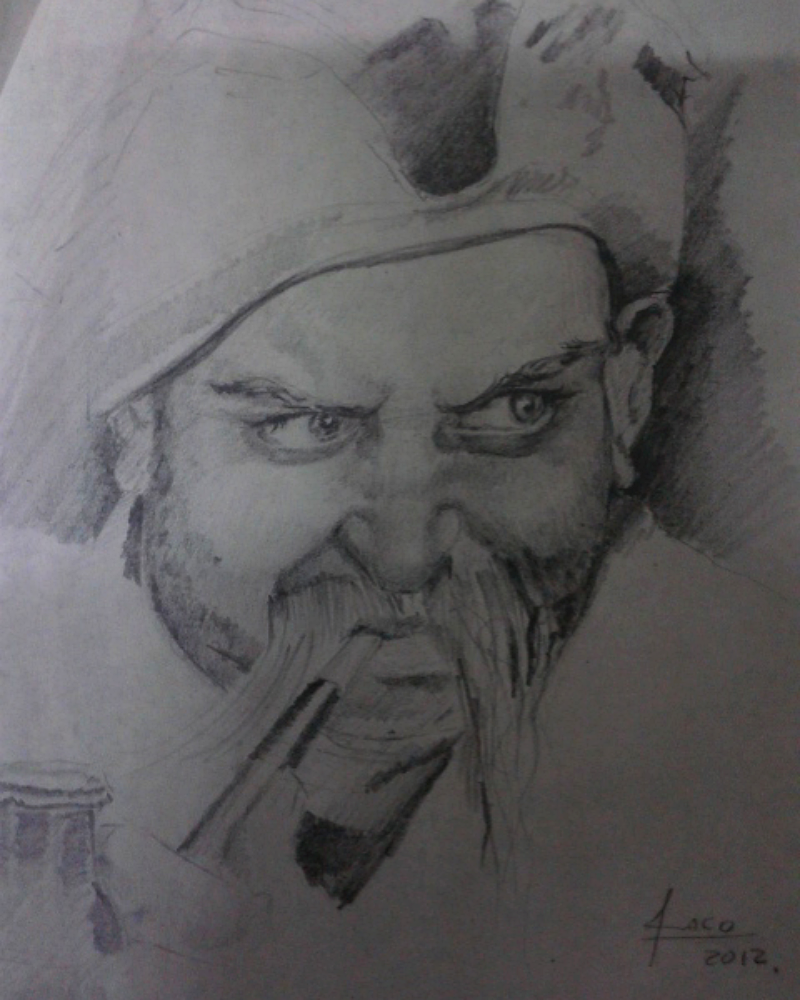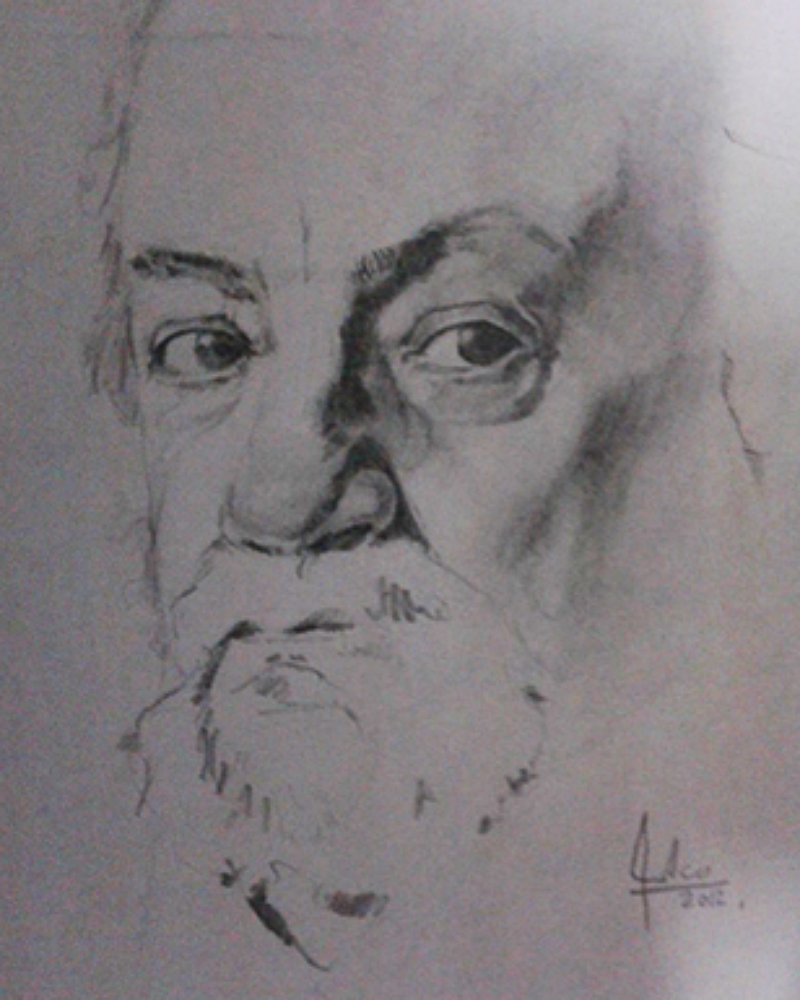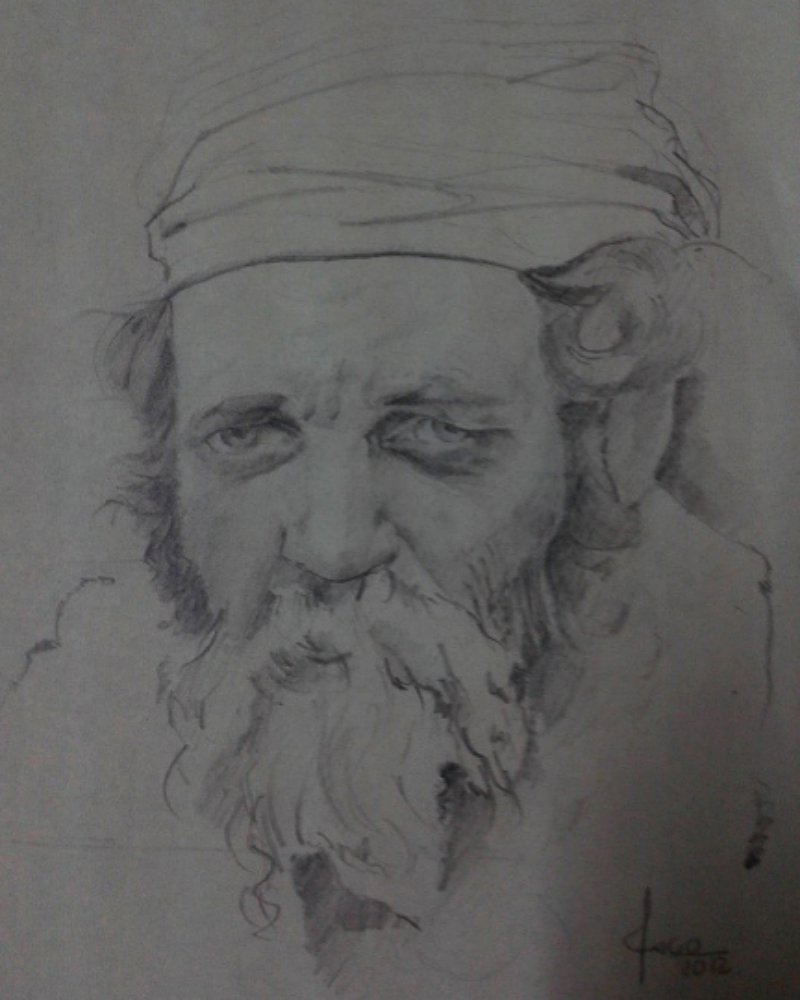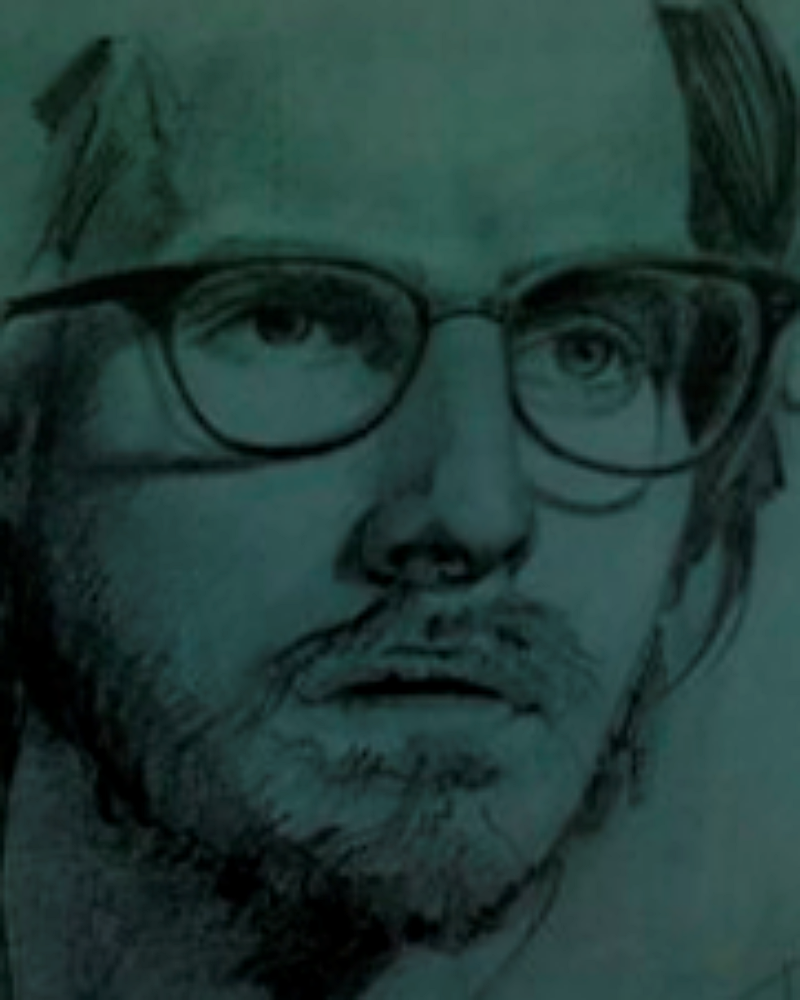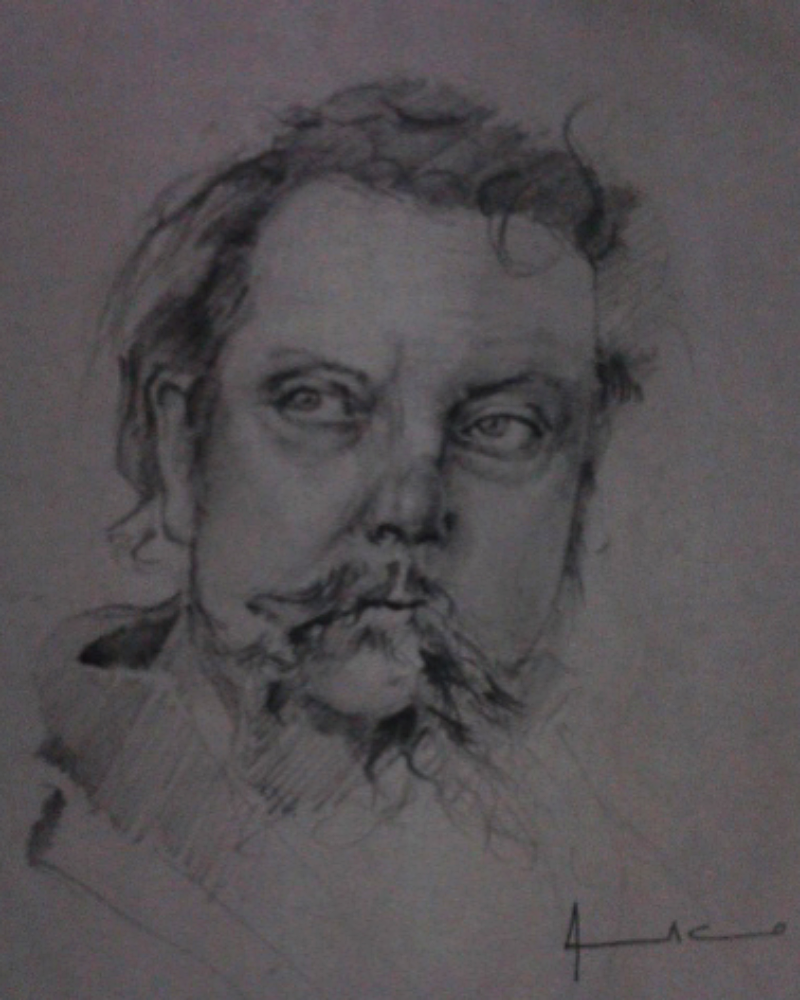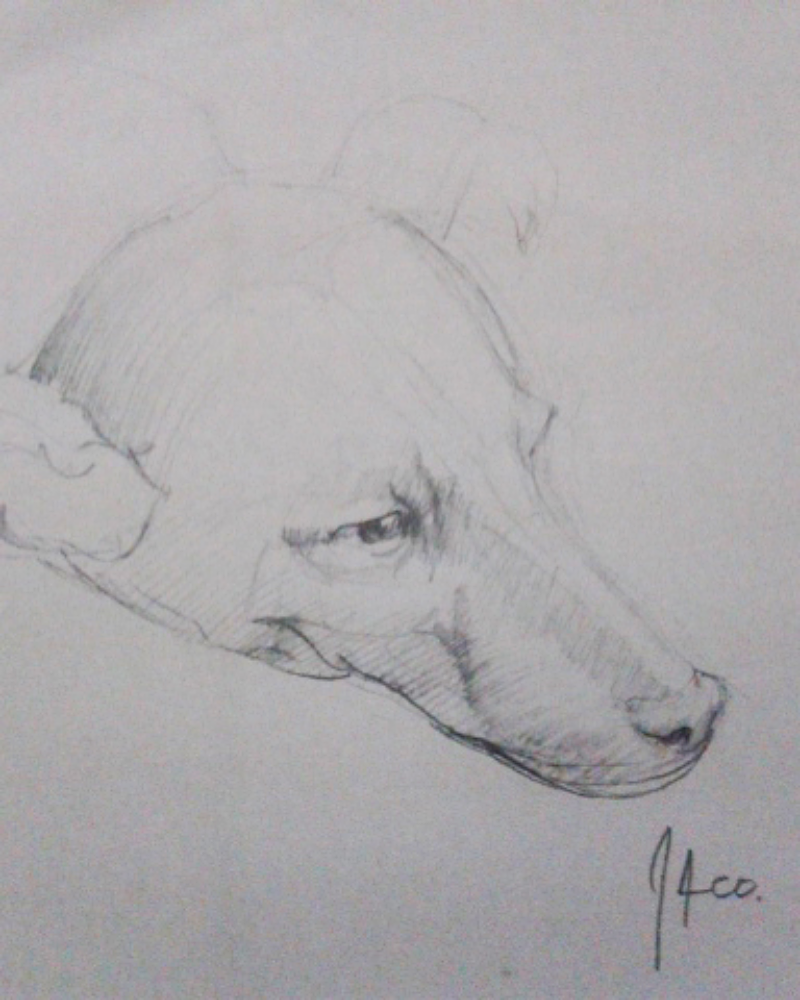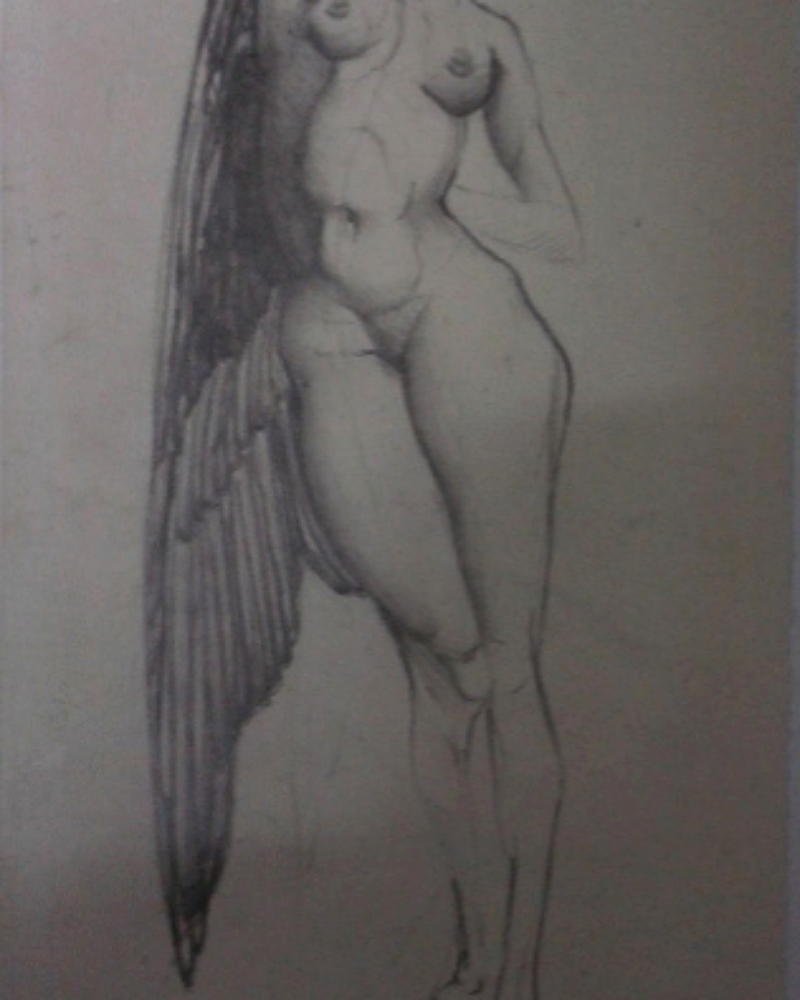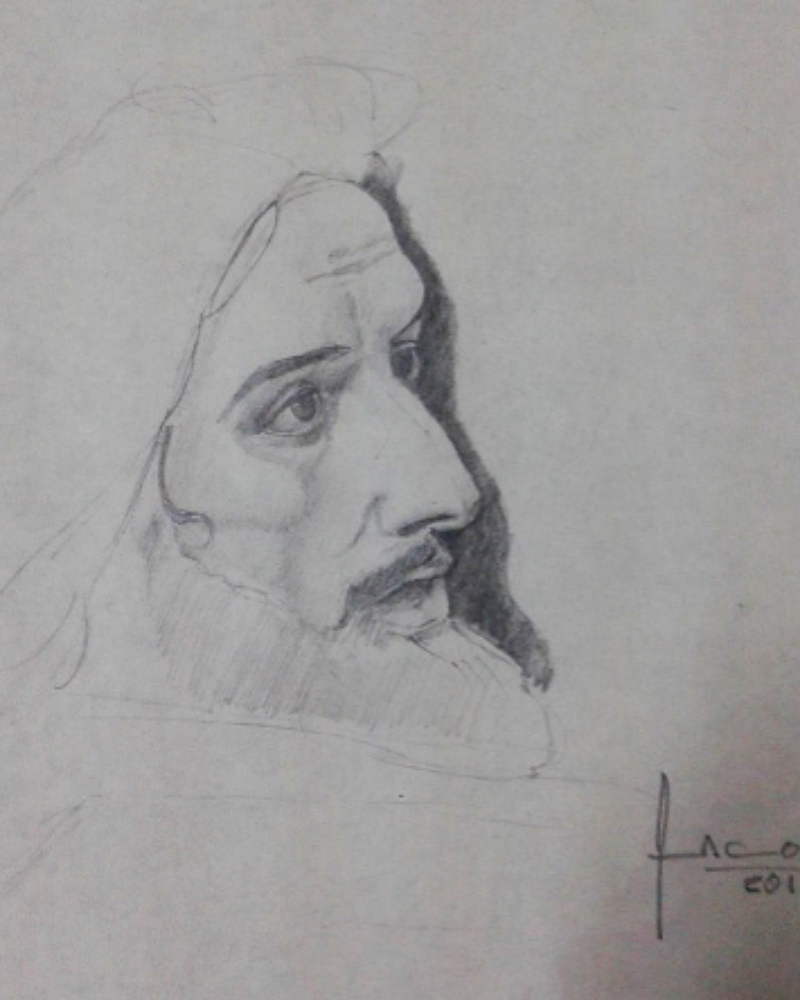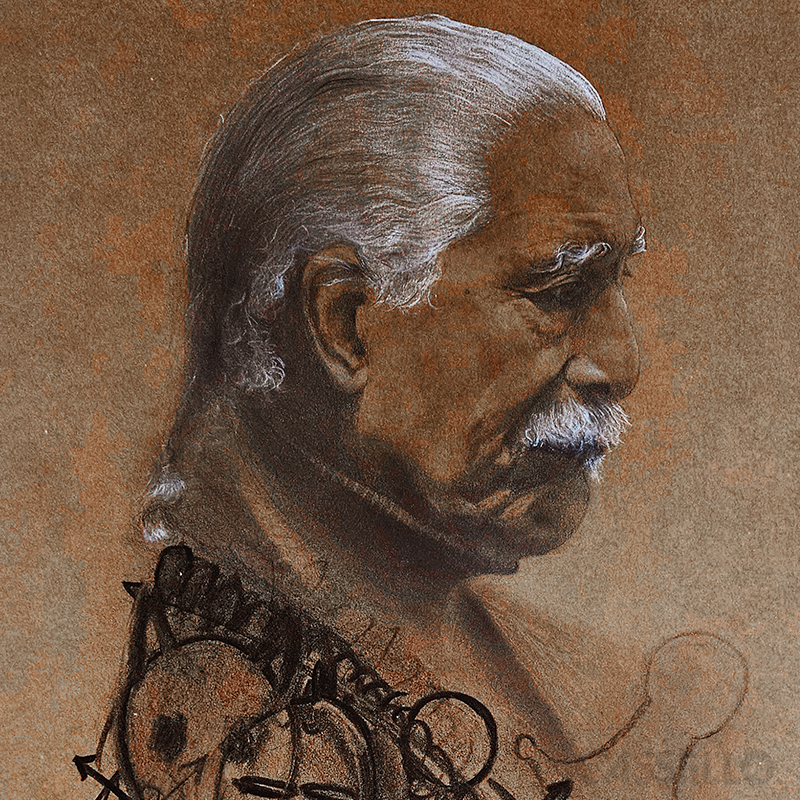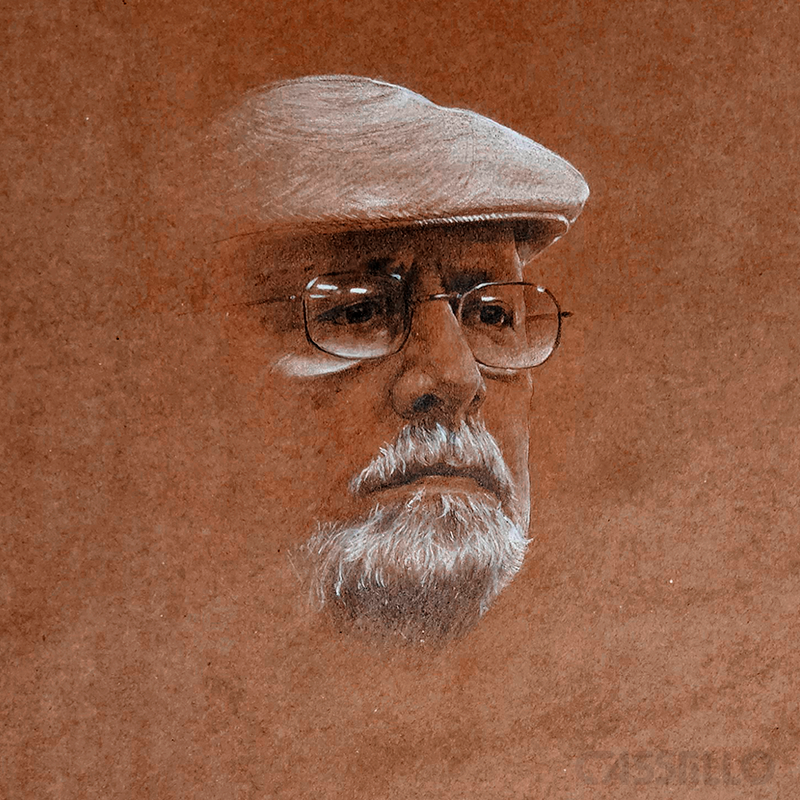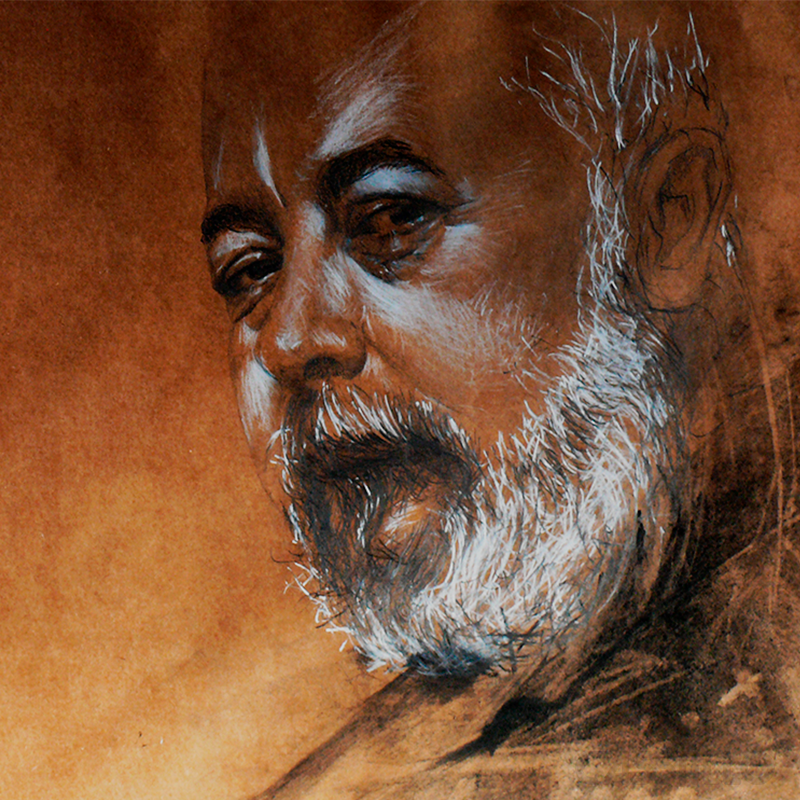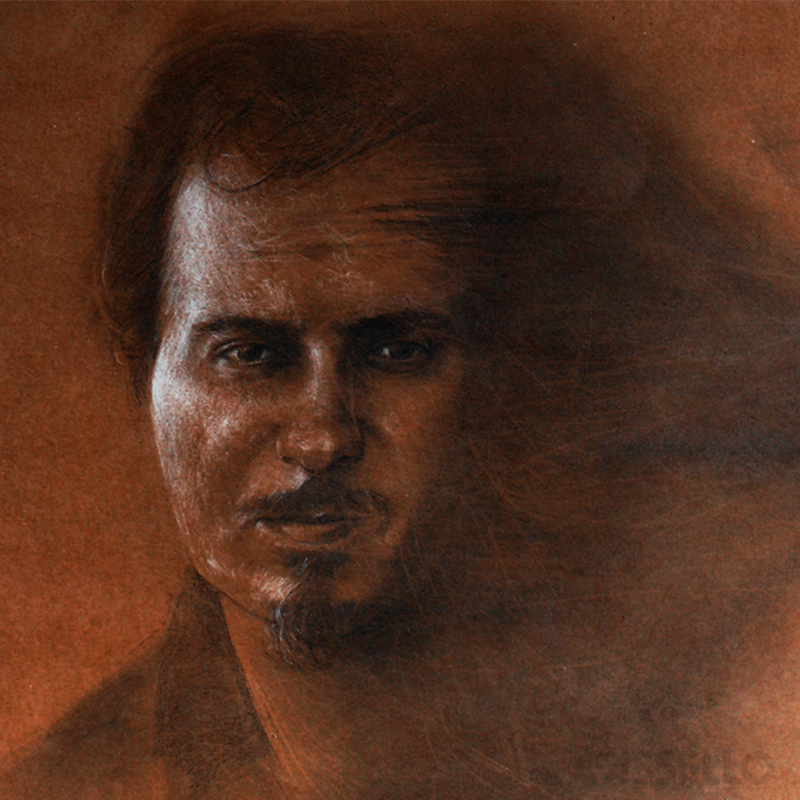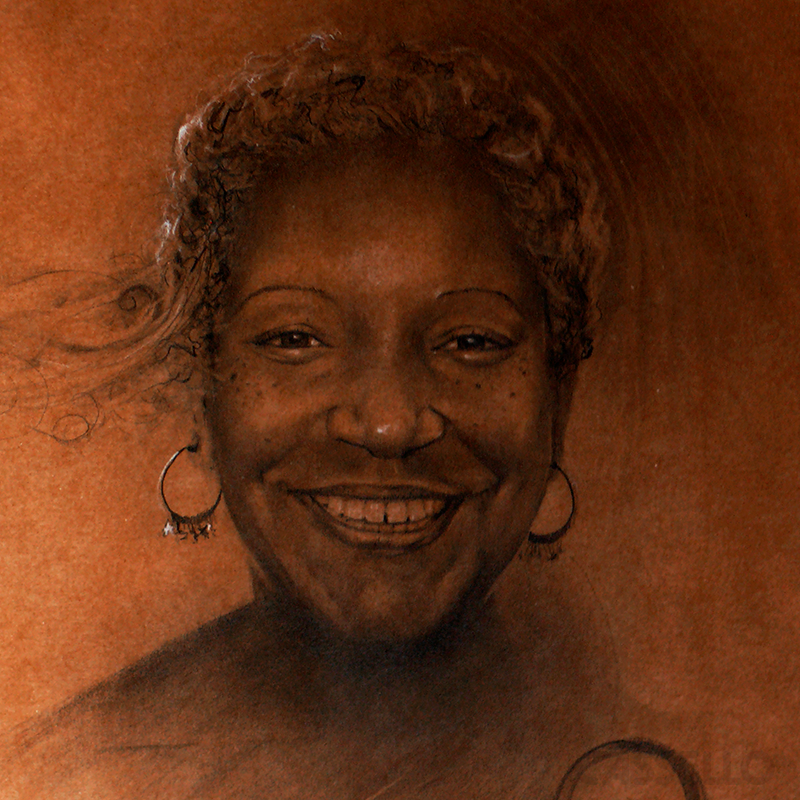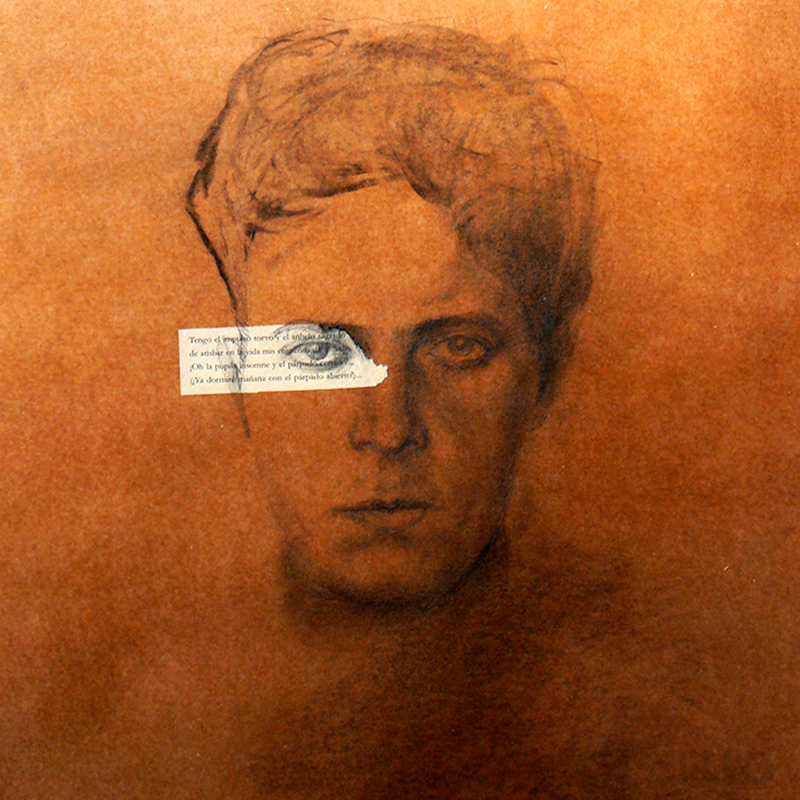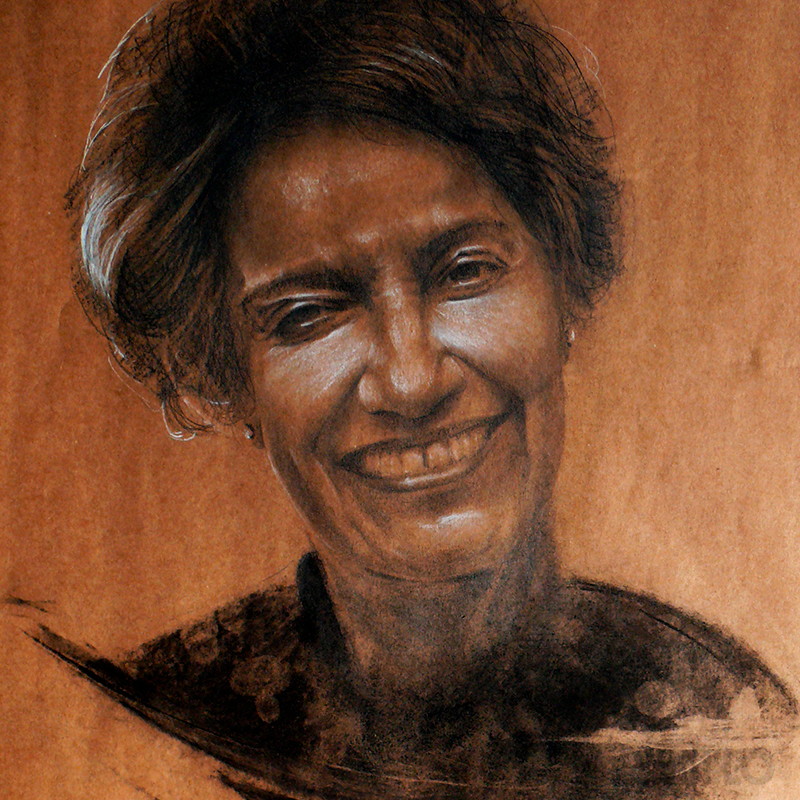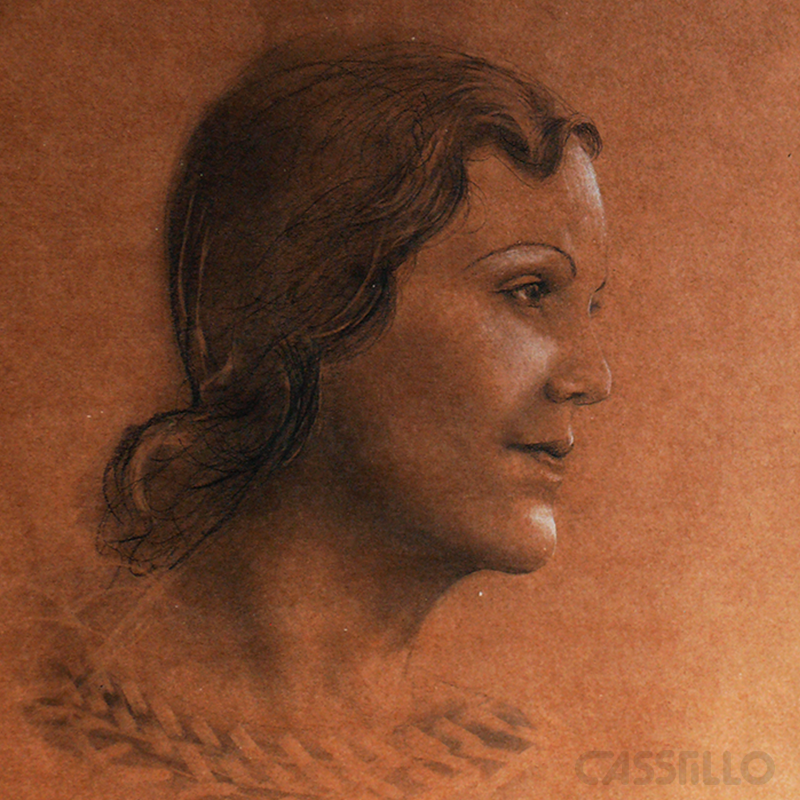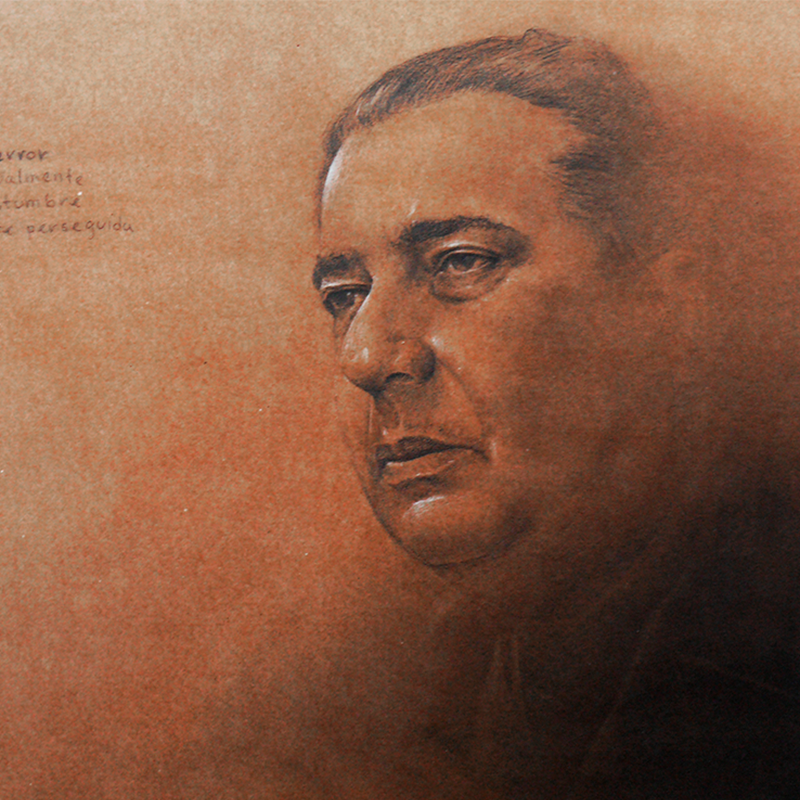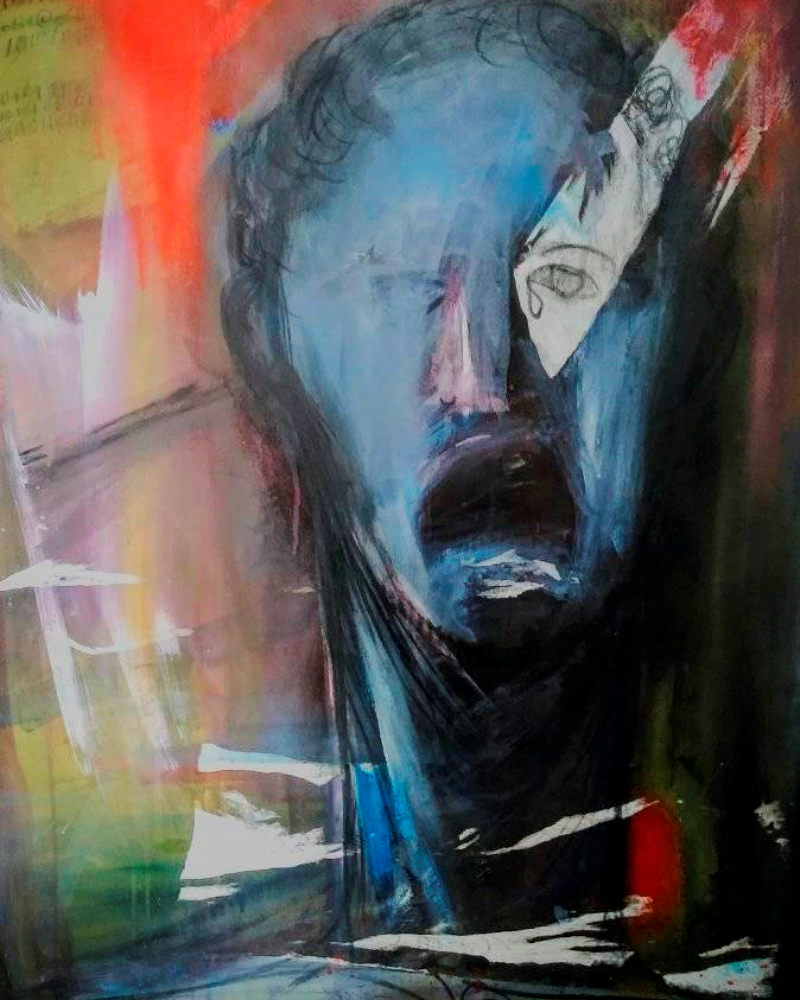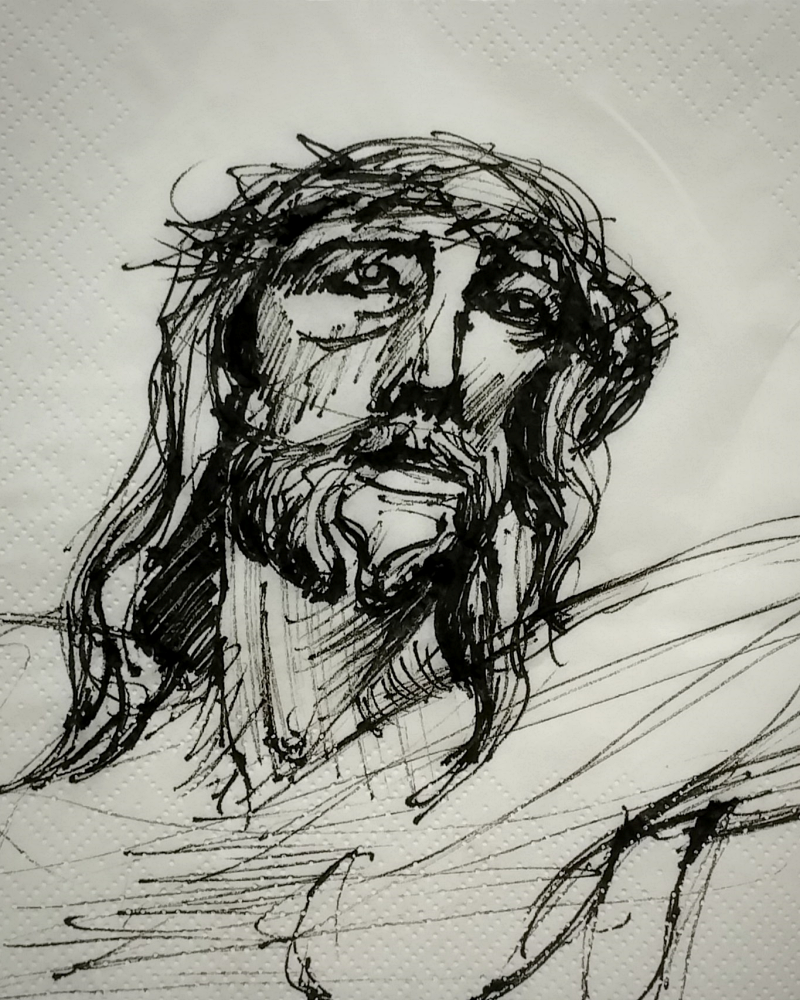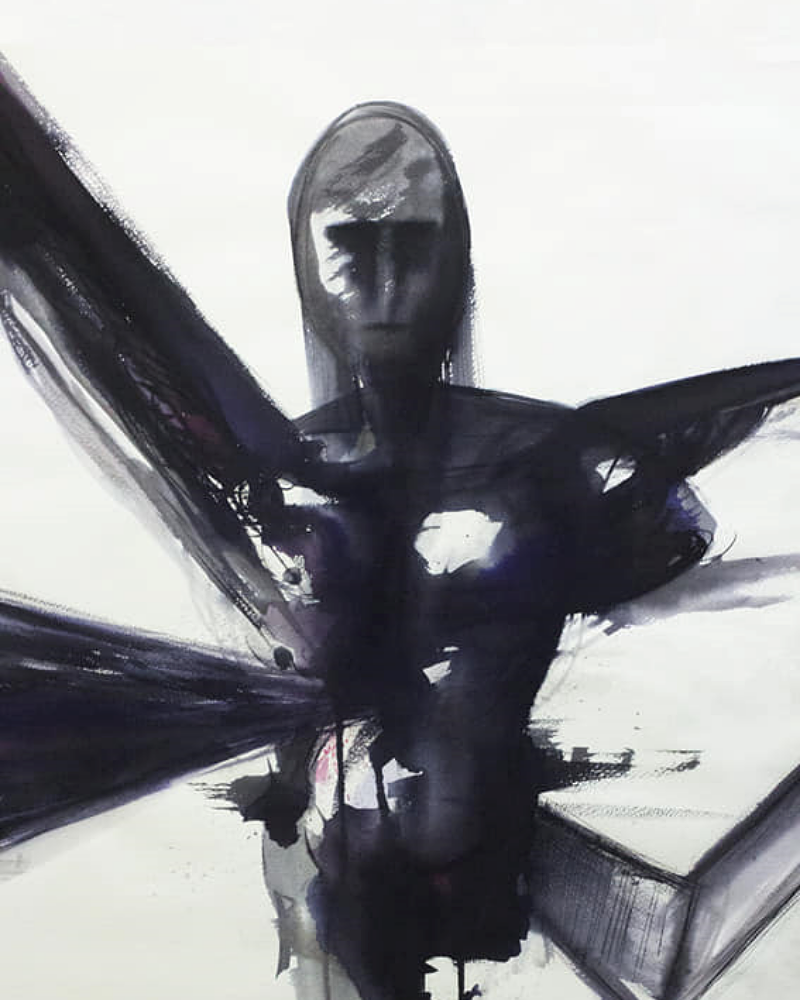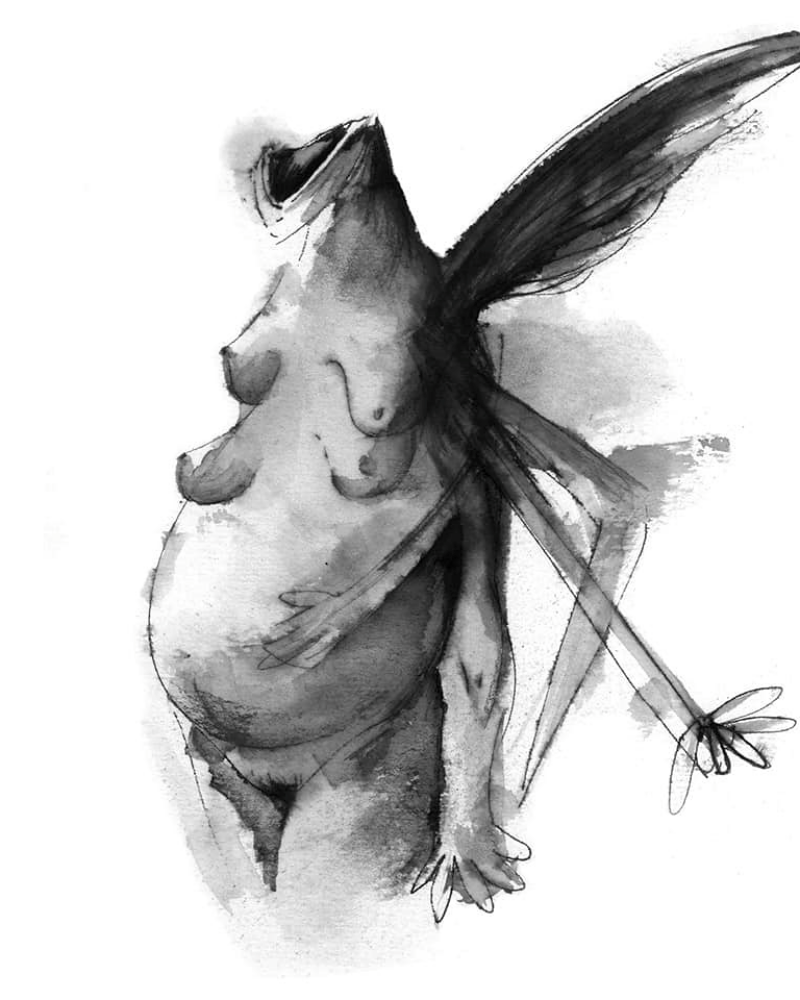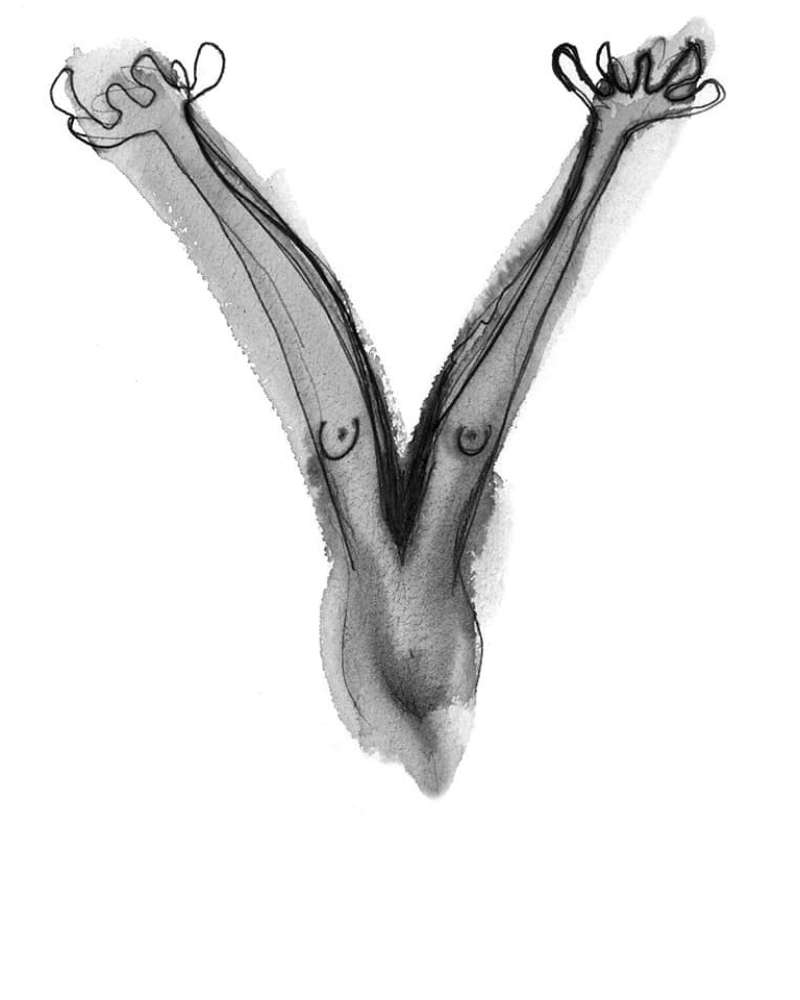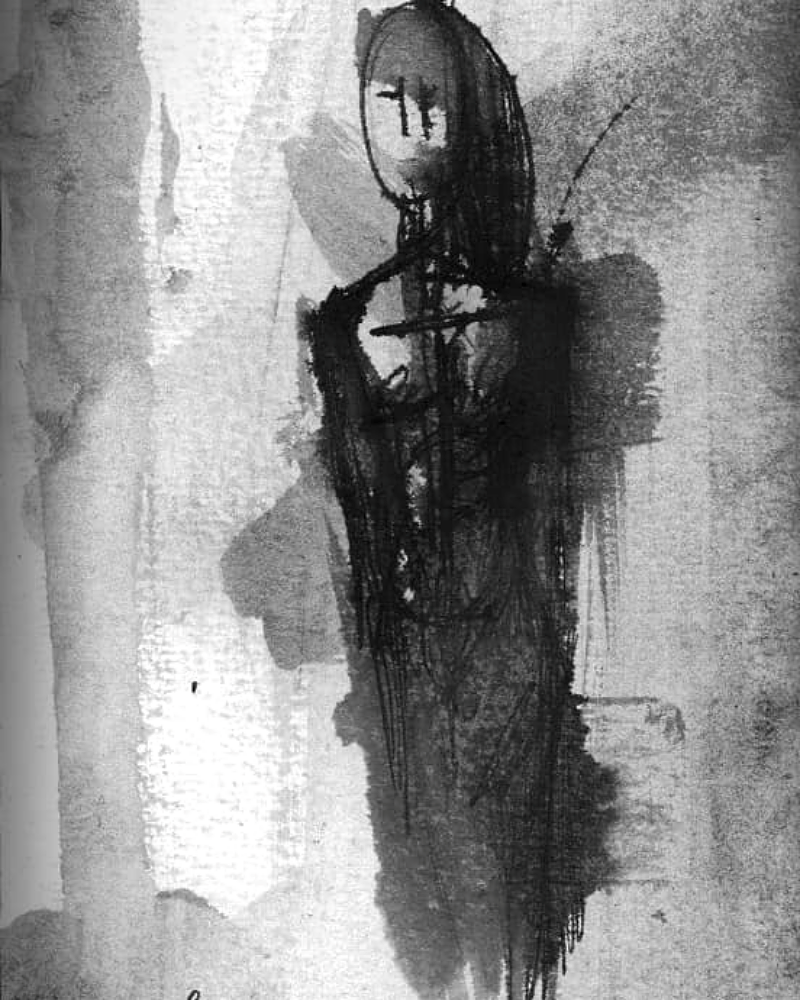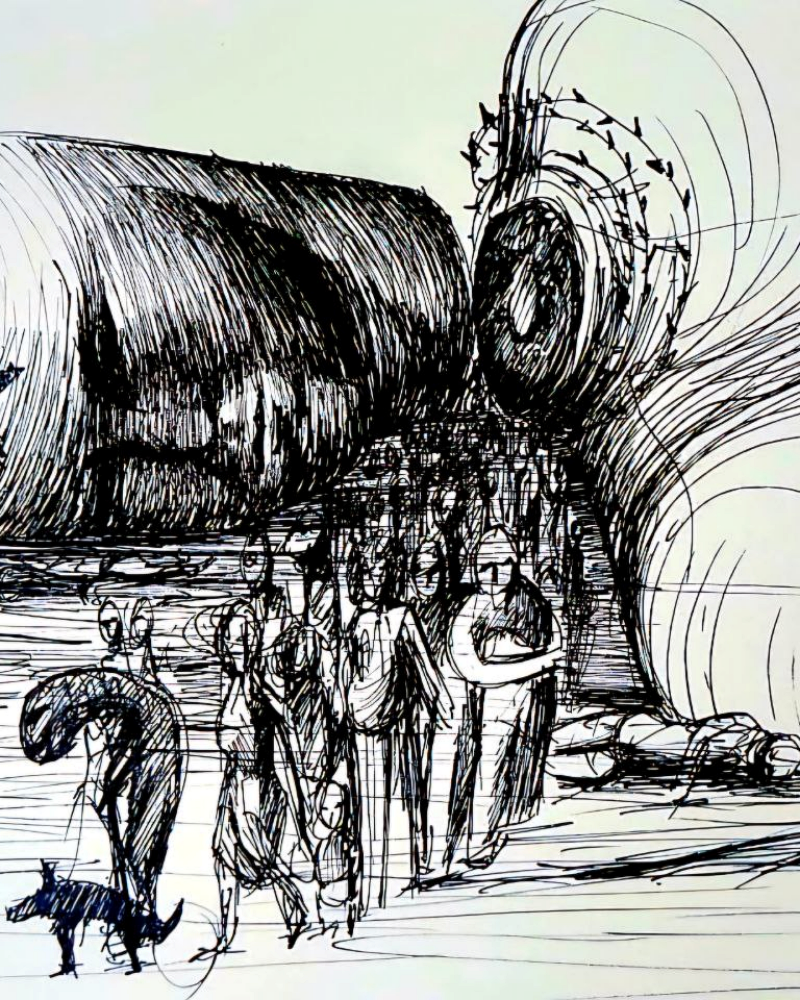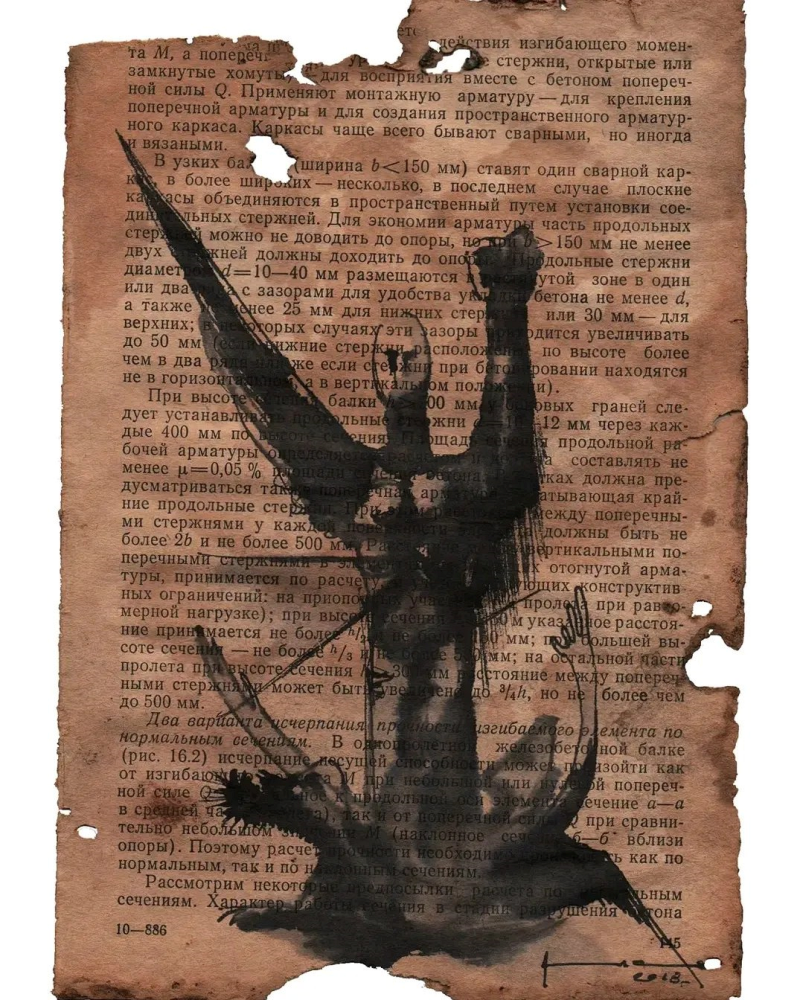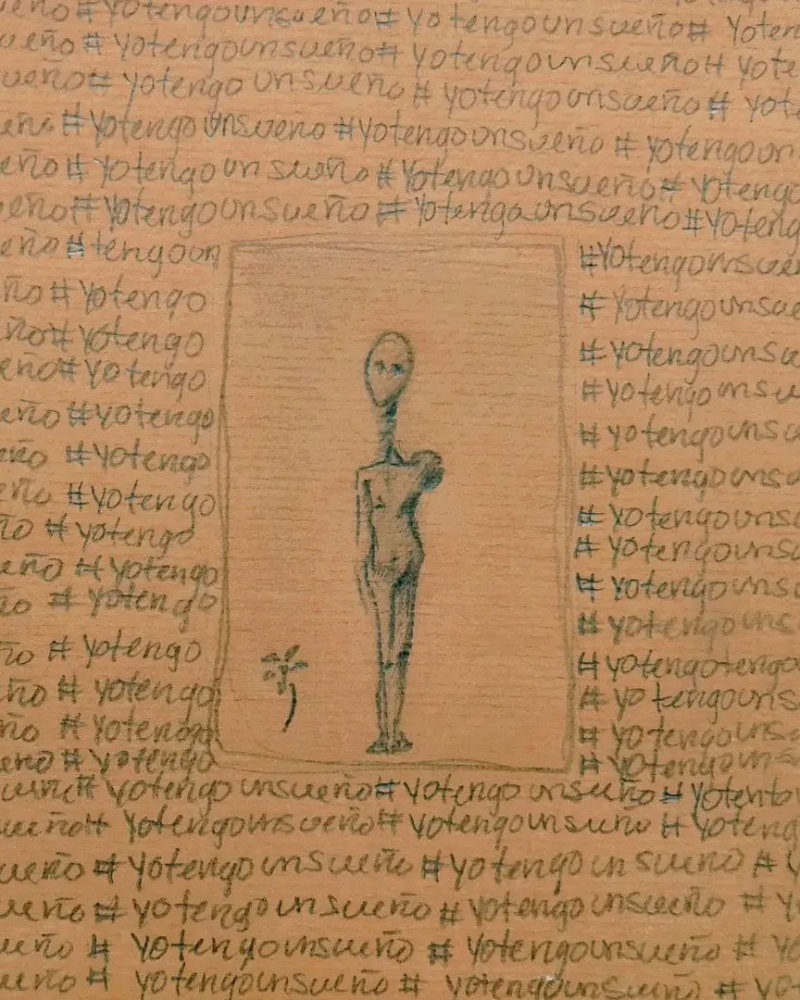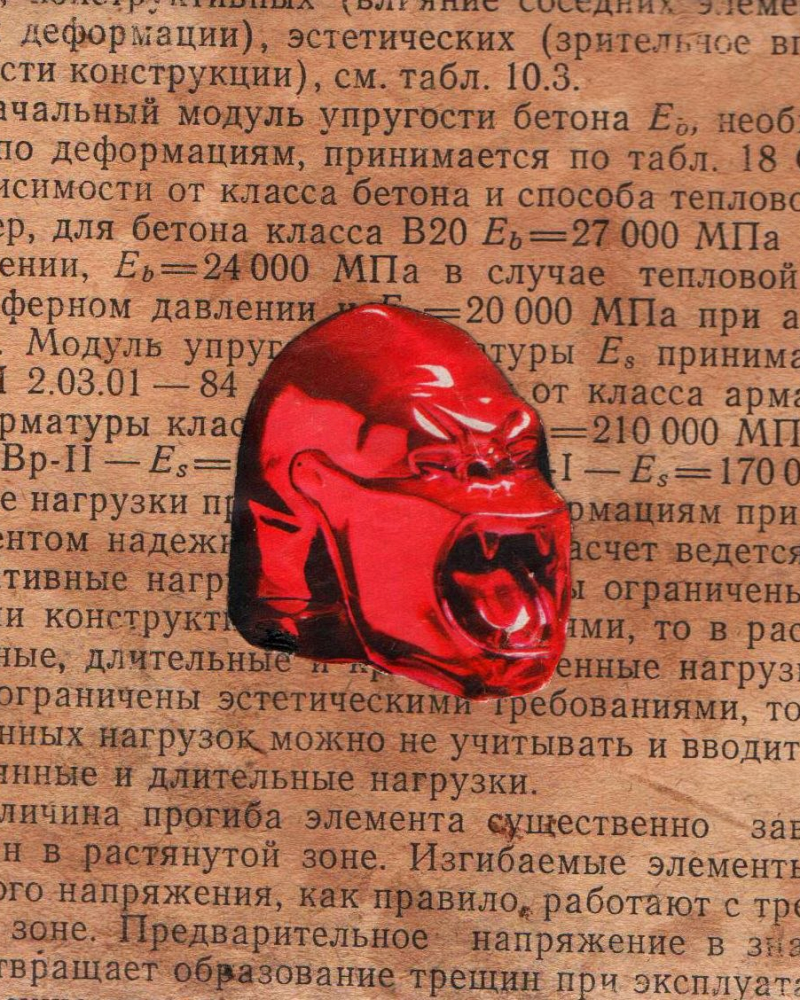Matter, Psyche, and Enigma
From academic portraits where anatomy was my only horizon (Period 1), I crossed into Internal Mutations (Period 2), a realm of fragmented bodies that exposed the emotional storms beneath the skin. That descent into subjectivity opened the door to my third period: algorithmic works that interweave biometric data, quantum laws, and spiritual resonances (Period 3). My trajectory thus traces an arc that begins with the tangible, delves into the mind, and culminates in the mysteries of the universe—where the material, the psychological, and the inexplicable converge in a single creative pulse.
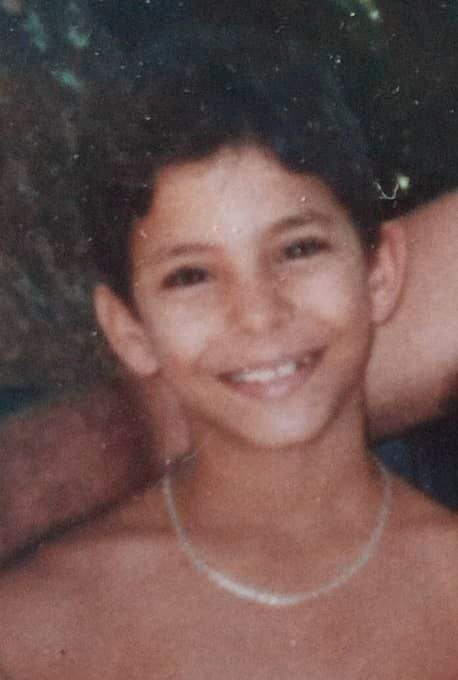
Origin & Epiphany
I was born in El Calvario, the highest hill in Havana, Cuba, a viewpoint from which the city spread out like a sea. From that ridge I learned that every horizon is also a boundary between what one observes and what one dreams.
I learned to see beyond form, seeking figures and connections in the damp stains on my bedroom ceiling. Each night, from my bed, it became my own Sistine Chapel, reminding me that even in the worst conditions imagined worlds can be born.
At eleven, I began formal drawing studies in a sculpture workshop; the line already pulsed within me, but mastering it allowed me to articulate and portray my thoughts with precision.
That workshop, surrounded by sculptors, taught me the elasticity of form: “the formulas of nature are different from those of painting,” Valentin Serov warned, and ever since my elongated line has sought that tension between what is seen and what is felt.
Beyond the Portrait
Over time, I wanted to go beyond mere technical freshness and delve into portraiture as a bridge to human complexity. I read those who argue that a good portrait doesn’t aim for photographic replication, but for inner resonance: how subtle tensions in expression or a slight tilt of the head can unveil hidden fears, desires, or memories. That’s why capturing the exact outline no longer suffices; I strive for every shadow and every line to reflect how the subject inhabits their own story.
In my studies, I abandoned the pursuit of perfection and began to focus on the rhythm of features: the arch of an eyebrow that heralds a thought, the space between lips that implies silence, the faint tension in the neck that foreshadows an emotion. In this way, graphite becomes a vehicle—a stroke that transcends surface and probes the model’s psychology. Each time I draw, I ask myself what hidden impulse drives them, what contradictions lie in their gaze.
This approach led me to see portraiture as a dialogue. It’s not the artist imposing a vision, but two wills meeting: the observer’s and the sitter’s, who through minimal gestures reveals their complexity. My line is no longer a copy, but an active listening: a way to accompany the other in their presence and allow the many layers of their being to surface on paper.
Internal Transfigurations
I chose to abandon academic portraiture and dive into a visceral imaginary: the bodies I drew began to splinter, faces became veiled, and everyday supports—napkins, pages from Soviet manuals, industrial card stock—replaced the traditional canvas. Under the combined influence of Picasso’s late Cubism and Wifredo Lam’s Afro-Cuban Cubism, my figures morphed into winged hybrids, animal totems, and processions of exiles. Ink, ballpoint, and acrylic mingled with scorch marks and splatters; dark stains—almost bruises—exposed psychic fissures while slashing diagonals injected kinetic tension.
Each piece turned into a sensitive document: the Christ I sketched on an ordinary dinner napkin lays bare the fragility and apparent insignificance of our daily gestures—a disposable support repurposed to examine sacrifice, how a life is offered, stained, and discarded once its “function” is fulfilled. The beheaded man in another drawing represents the homeland itself; his blood is the historically migrant people who perish along the way.
This phase marked not only a formal break but a complete conceptual redefinition. I set out to move beyond mimesis and chart the mental noise of my era, fusing memory, pain, and sociopolitical critique into a single graphic impulse. It became my emotional laboratory: the line evolved into a data vector, the support into an experimental field, and—above all—the viewer into a co-author. Thus, these Internal Transfigurations crystallize my transformation into a cartographer of the contemporary psyche, shifting my practice from anatomical drawing toward the creation of critical devices that interrogate both my biography and the historical context alike.
Hybrid Training
At nineteen I entered the School of Software Engineering, and abstract symbols rearranged themselves into a technical blueprint of the world. Linear algebra was no longer pure theory: vectors, matrices, and rotations describe both galactic expansion and the precise angle at which light strikes a pupil. In graph theory I saw the hidden weave of reality: neural networks, migratory routes, data packets crossing the Internet—all sketched as adjacency lists and weights. The Turing machine emerged as a master algorithm: any process—from a fern’s growth to a protein’s folding—can be expressed in finite states and transition rules.
I discovered that mathematical laws command the known world at every scale: at the quantum level, wave equations describe overlapping electrons; at the microscopic, stochastic matrices model cellular metabolism; at the macroscopic, differential systems govern atmospheric circulation; and at the mega-scale—the structure of the universe—general relativity is written in tensors. Among these, discrete mathematics forms the intermediate gearing: combinatorics for the genetic code, graph theory for synapses and ecosystems, modular arithmetic for the cryptography that protects our daily information. I realized that computational logic—with its AND/OR gates, truth tables, and cellular automata—is the same logic that orders DNA, regulates circadian cycles, and synchronizes galaxies along cosmic filaments.
Every proof on the blackboard turned into a visual scheme: sparse matrices resembling star maps, flowcharts whirring like gears, recursions spawning fractal spirals. I competed in programming contests and, back in my room, translated algorithms into sketches and sketches into code, convinced that logic must also stain itself with graphite to take shape. The principles of computing—abstraction, modularity, iteration, and error control—are the same ones that structure biology and celestial mechanics. That two-fold practice, manual and algorithmic, is now my central tool: I program as I draw, and draw as one assembling a mathematical model capable of linking the human scale to the scale of the cosmos.


